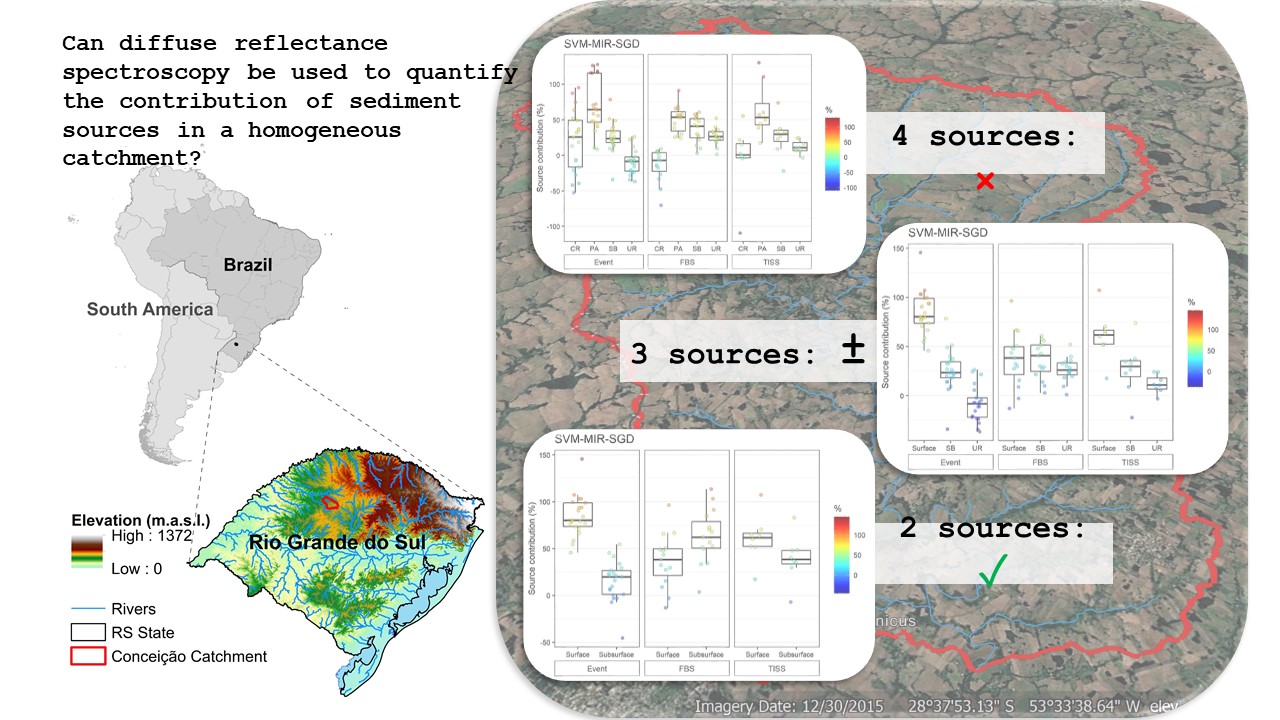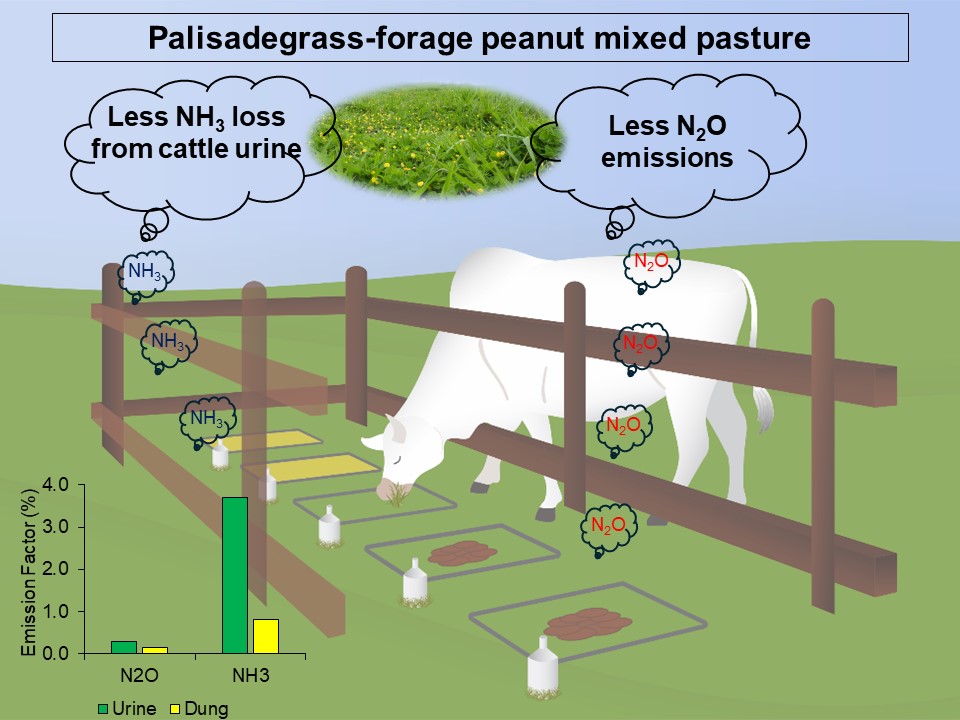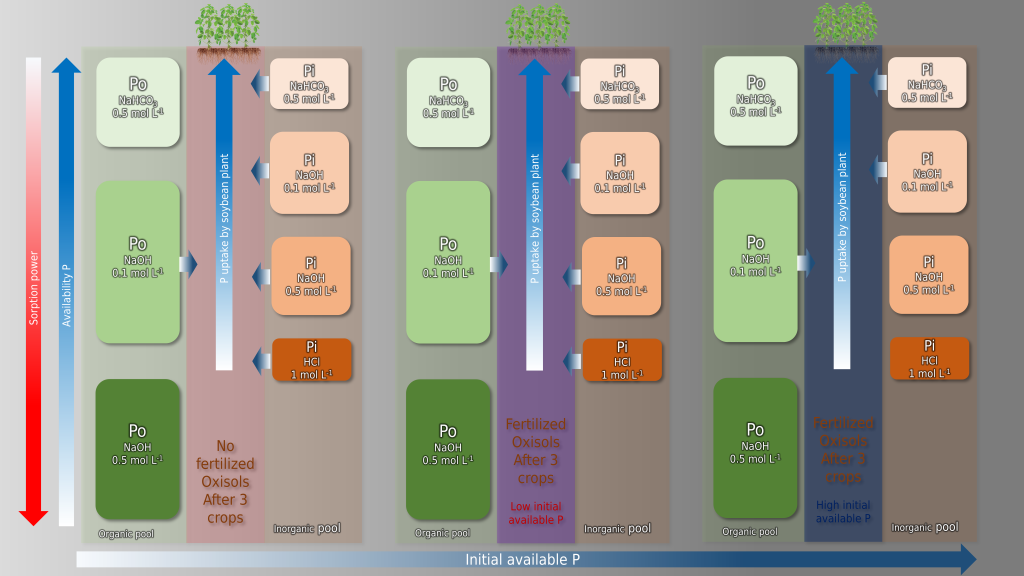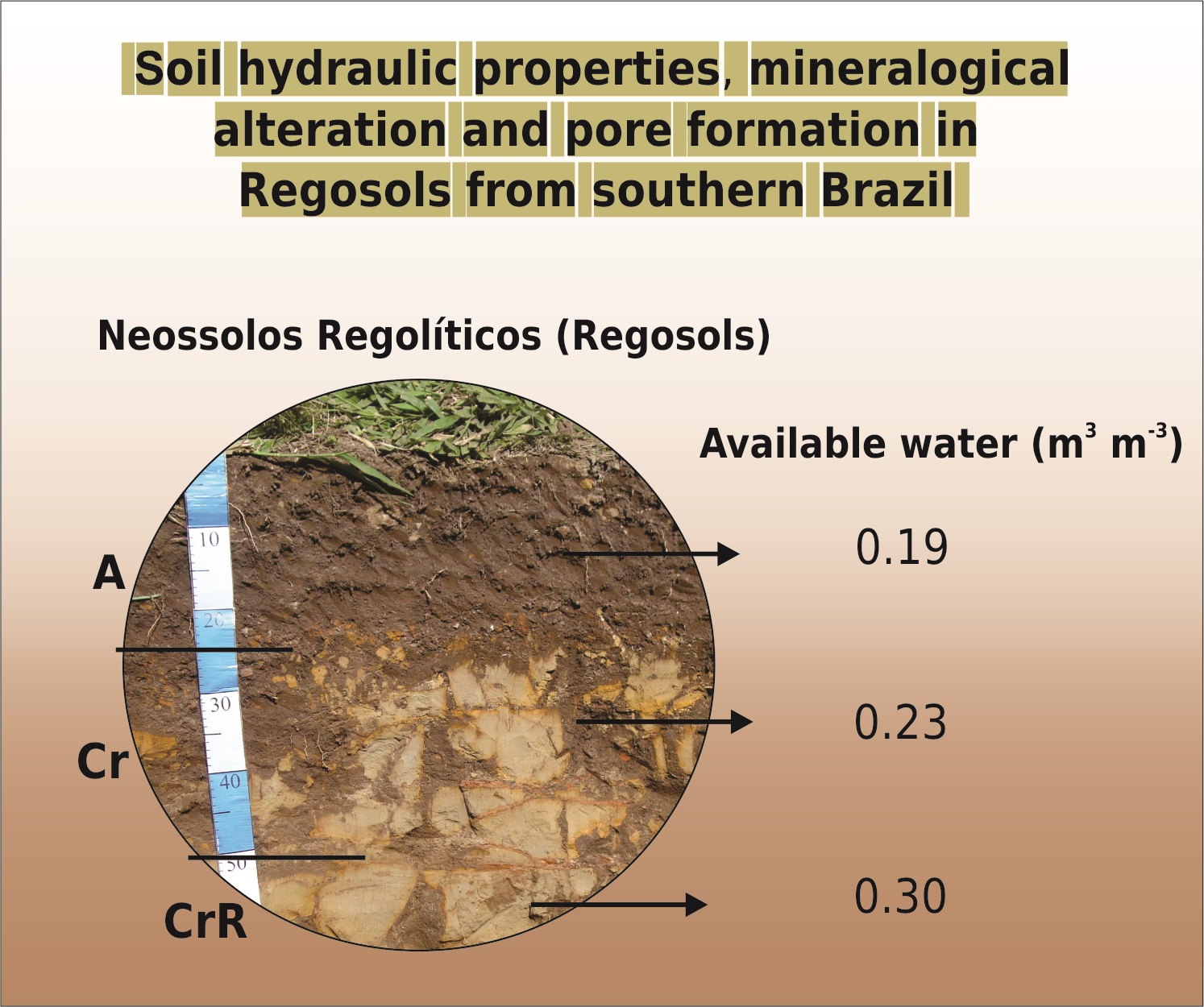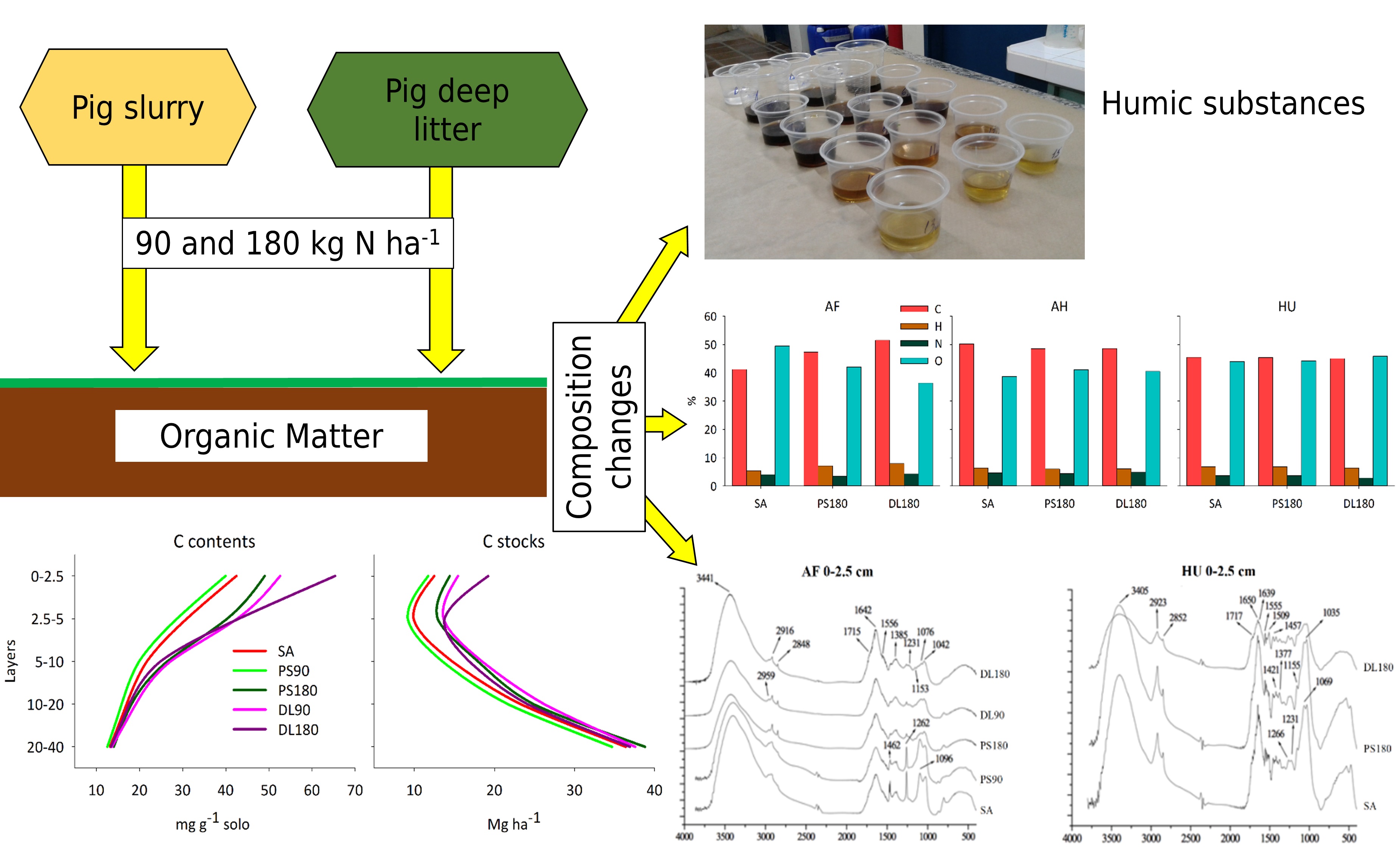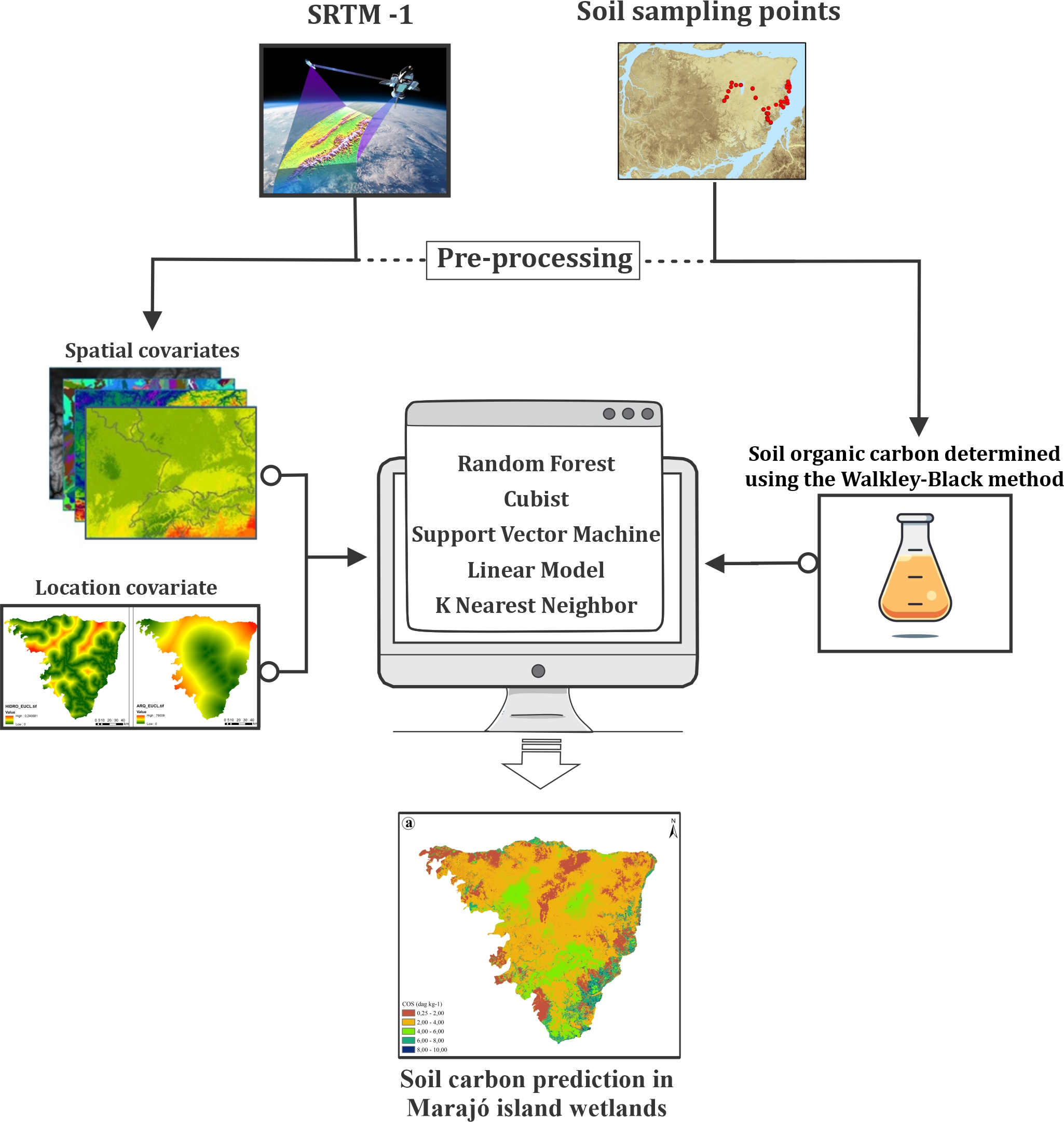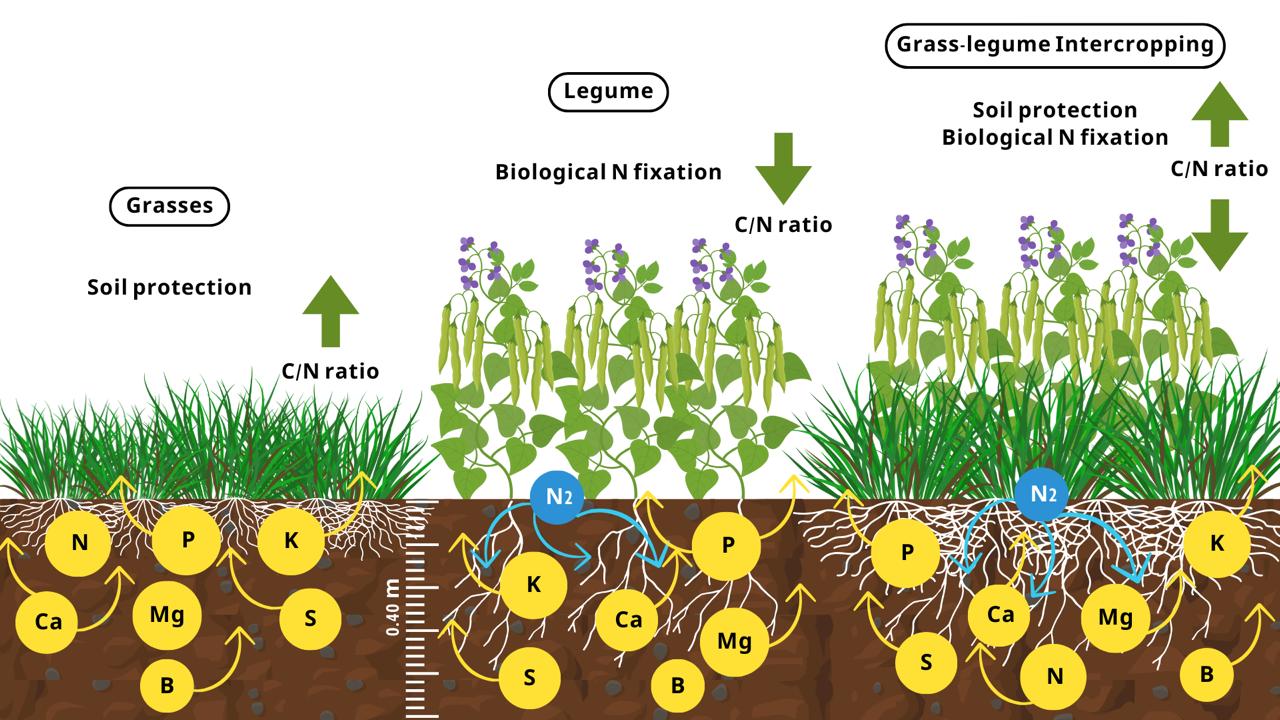Sediment source tracing in a Brazilian subtropical catchment using diffuse reflectance: Effect of spectral ranges, pre-processing techniques, and multivariate model
11/Oct/2024
ABSTRACT Agriculture intensification in Southern Brazil’s subtropical regions combined with the frequent occurrence of erosive rainfall has rendered the area a global water erosion hotspot. In this scenario, understanding and regulating erosion processes at the river catchment scale is critical for mitigating soil and water resource degradation. Traditional methods for tracing sediment sources are expensive and time-consuming and justify the development of alternative approaches. Therefore, in this study, we employed diffuse reflectance spectroscopy analyses in the ultraviolet-visible (UV-VIS), near-infrared (NIR), […]
Impact of a forage legume or nitrogen fertilizer application on ammonia volatilization and nitrous oxide emissions in Brachiaria pastures
11/Oct/2024
ABSTRACT The largest proportion of greenhouse gas (GHG) emissions in the Agriculture sector of the Brazilian national GHG inventory is derived from the large (>200 million head) herd of cattle. The greatest contribution to these emissions comes from the enteric methane from cattle, but the direct and indirect emissions of nitrous oxide (N2O) from cattle excreta and N fertilizer are responsible for approximately 9 % of all national anthropogenic GHG emissions. Ammonia (NH3) can be volatilized from N fertilizer and […]
Use and recovery of P reserves in Southern Brazil Oxisols under no-till with low and high P availability
10/Sep/2024
ABSTRACT The accessibility of soil P reserves by plants on highly weathered Brazilian soils remains unclear. In this study, we assessed the contribution of soil P fractions to P uptake by soybean plants in two no-till Oxisols (Latossolos), with low and high initial content of available P. The recommended P rates (viz., 153 and 50 kg ha-1 yr-1 in the low-P and high-P soil, respectively) were applied in the form of triple superphosphate (TSP) or Bayovar rock phosphate (BRP) plus […]
Soil hydraulic properties, mineralogical alteration and pore formation in Regosols from southern Brazil
27/Aug/2024
ABSTRACT Regosols (Neossolos) are soils with use limitations mainly related to effective depth, abundant presence of rock and saprolite fragments, and frequently high slope gradients; besides that, they represent a new agricultural frontier for grain production in southern Brazil. This study evaluated soil saturated hydraulic conductivity (Ksat) and water retention and availability in Regosols and saprolites derived from volcanic rocks in southern Brazil and the relationship of these variables with porosity in saprolithic horizons characterized by mineralogical weathering. The study […]
Chemical and spectroscopic composition of humic substances in soil subjected to pig manure applications for ten years
27/Aug/2024
ABSTRACT Application of pig manure (PM) in agriculture can influence the amount and composition of soil organic matter (SOM). This study evaluated the changes in contents and stock of C in chemical fractions of SOM and the chemical and spectroscopic composition of humic substances (HS) in a Typic Hapludult (Argissolo Vermelho-Amarelo) after ten years of PM application. Experimental area received 90 and 180 kg ha-1 of N in the form of pig slurry (PS90 and PS180) and pig deep litter […]
Soil carbon prediction in Marajó island wetlands
27/Aug/2024
ABSTRACT Soil is an important carbon repository in terrestrial ecosystems, serving a fundamental role in the intricate cycling of this elemental component. Wetlands are crucial components of the global carbon cycle, playing a significant role in carbon sequestration due to their remarkable productivity and unique sedimentary structures. Our study focuses on the wetlands east of Marajó island, recognized as the largest fluvial-marine plain in South America. In this study, we applied a methodological framework to optimize SOC content prediction in […]
Bone char: characterization and agronomic application as an alternative source of phosphorus
27/Aug/2024
ABSTRACT Alternative materials can be used to reduce reliance on mining for P-based fertilizers. In this sense, the pyrolysis process of bovine bones produces the “bone char”, which can be used as a source of P. This study aimed to characterize bone char and conduct a comparative analysis with both soluble (triple superphosphate) and non-soluble (Bayóvar phosphate rock) phosphate fertilizers, specifically examining its behavior in soil and uptake by plants. Bone char characterization was performed by X-ray diffraction (XRD), attenuated […]
An evaluation of land-use capability using the LESA method coupled with geostatistics in a GIS environment
26/Jul/2024
ABSTRACT Land-use effectiveness can be ensured by utilizing GIS and geostatistical tools in conjunction with land assessment methods to prevent soil erosion and salinization. This study employs a GIS-based LESA methodology, combined with geostatistics, to evaluate the land’s capacity to produce agricultural crops on calcareous soils. Land Evaluation for Agricultural Uses (LESA) key components are site assessment and land evaluation, with the former being non-soil-dependent and the latter being soil-dependent. Geostatical kriging was used to interpolate and generalize a GIS […]
Forage and macronutrient accumulation in grass-legume intercropping in a warm climate
26/Jul/2024
ABSTRACT Diversifying pastures with forage legumes may reduce nitrogen fertilization due to biological N fixation. This study aimed to quantify forage accumulation rate and macronutrients extraction and to identify the best intercropping combination between butterfly pea (Clitoria ternatea) – a legume, and three warm-season forage grasses of different growth habits (signalgrass – Urochloa decumbunes, Guinea grass – Mega thyrsus maximus, and bermudagrass Cynodon dactylon). Treatments consisted of mixes of perennial herbaceous legume, butterfly pea (twining stem), with grasses, signalgrass (decumbent […]
Soil legacy data: An opportunity for digital soil mapping
23/Jul/2024
ABSTRACT Soil legacy data is past information on soils available from various sources (e.g. survey reports and maps). When compiled and organized, data obtained through historical retrieval can be used as basic input or validation data for digital soil mapping. A bibliometric analysis of this topic can reveal research patterns, evolution, and scientific contribution, thus mapping the science produced in a specific period and determining the trend in research topics based on search terms. This article presents the characterization of […]

